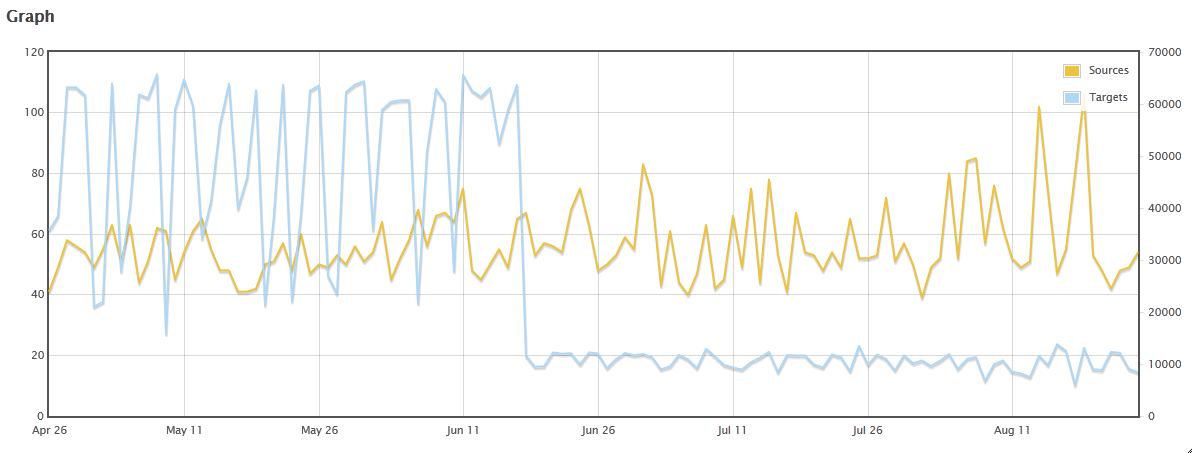UDP port 1900 DDoS traffic
I guess this is my day for asking for feedback from our readers. Again, I'm going to ask "Got packets?" On 22 Aug, one of our readers (Paul) commented on the Port 1900 page that he was seeing a DDoS on port 1900, with packet sizes of 300 bytes. This is a development we've been watching at $dayjob, too, but I was wondering if anyone (including Paul) has packets so we can try to figure out what the amplification mechanism might actually be (if you have the packets, please share via the contact page). What we're seeing in Dshield data is a little odd and different from what I'm seeing at $dayjob. You'll note below that there were a more targets until they suddenly dropped off on 18 Jun. On the other hand, the sources seem to be trending upward (at least, peaking higher). Unfortunately, we only have source and target counts in the Dshield data, not byte volumes. Compare that with what we're seeing at the $dayjob as shown in the webcast we do weekly there (from 39:55 in this video -- watch to about 47:00 if you want to see our discussion of all the reflective DoS ports we're watching).

References:
[1] https://isc.sans.edu/port.html?port=1900
[2] http://techchannel.att.com/play-video.cfm/2014/8/14/AT&T-ThreatTraq-1-Billion-Accounts-Hacked
---------------
Jim Clausing, GIAC GSE #26
jclausing --at-- isc [dot] sans (dot) edu
Unusual CRL traffic?
One of our readers, Brian, wrote in this morning saying that he was seeing an unusually high volume of traffic attempting to check certificate revocation lists (CRLs) from lots of different IPs (so it doesn't look like a denial of service attack, there are lots of both sources and destinations). I haven't heard of anything that going on that would cause this behavior, but thought I'd ask our readers if they were seeing anything similar. Could a patch have caused it? Microsoft did patch IE 10 days ago, but that would be quite a lag time. If anyone else is seeing this and could grab a sample of the traffic (so we could look at User-Agents, etc.) please respond below or through our contact page. Thanx in advance for your assistance.
---------------
Jim Clausing, GIAC GSE #26
jclausing --at-- isc [dot] sans (dot) edu


Comments